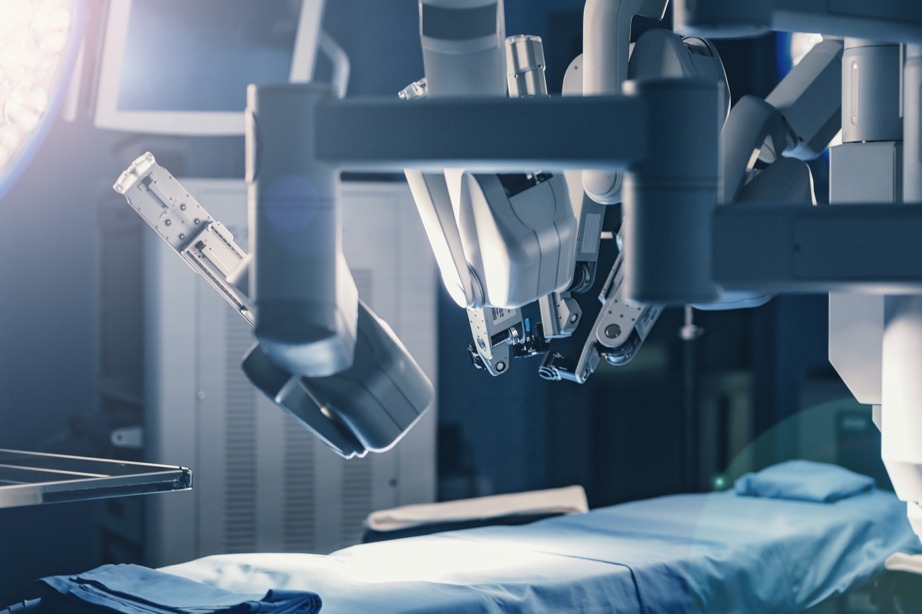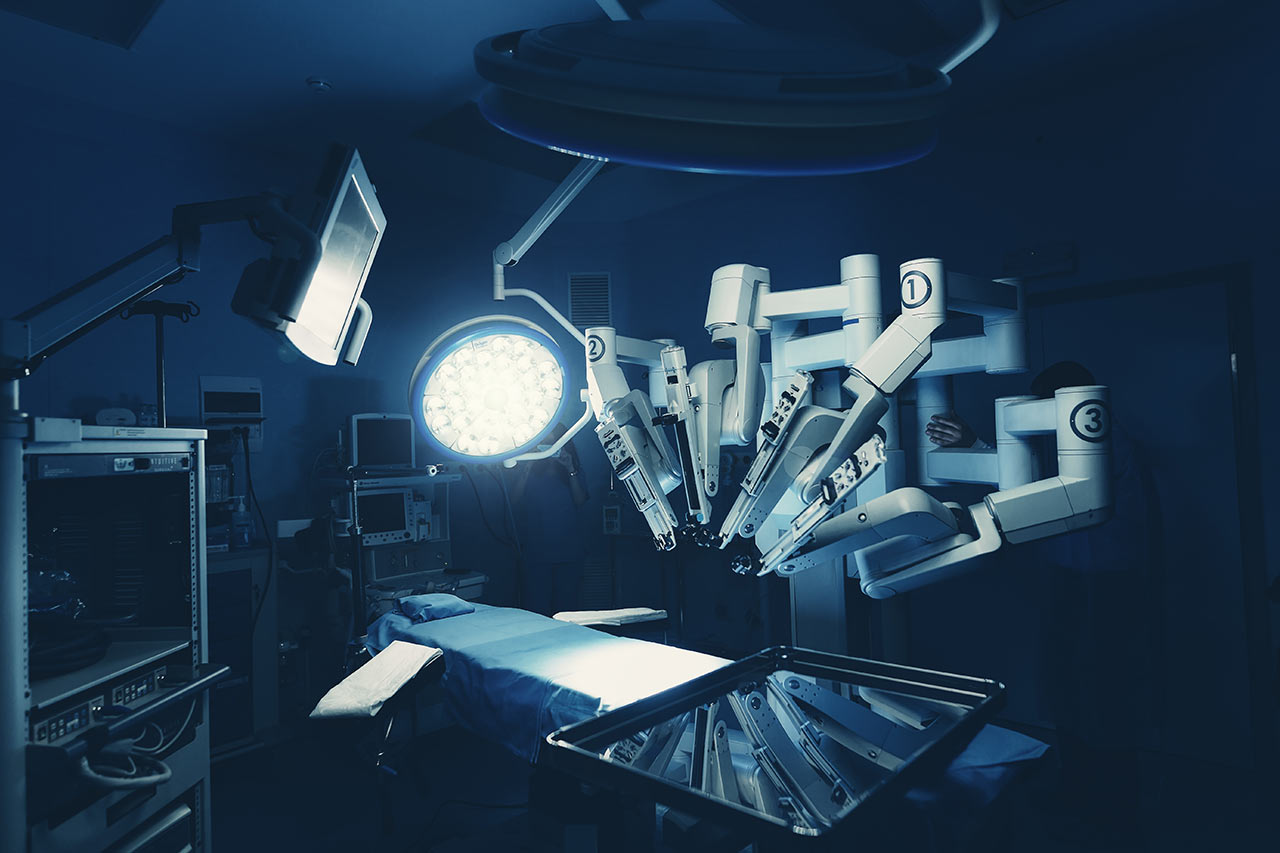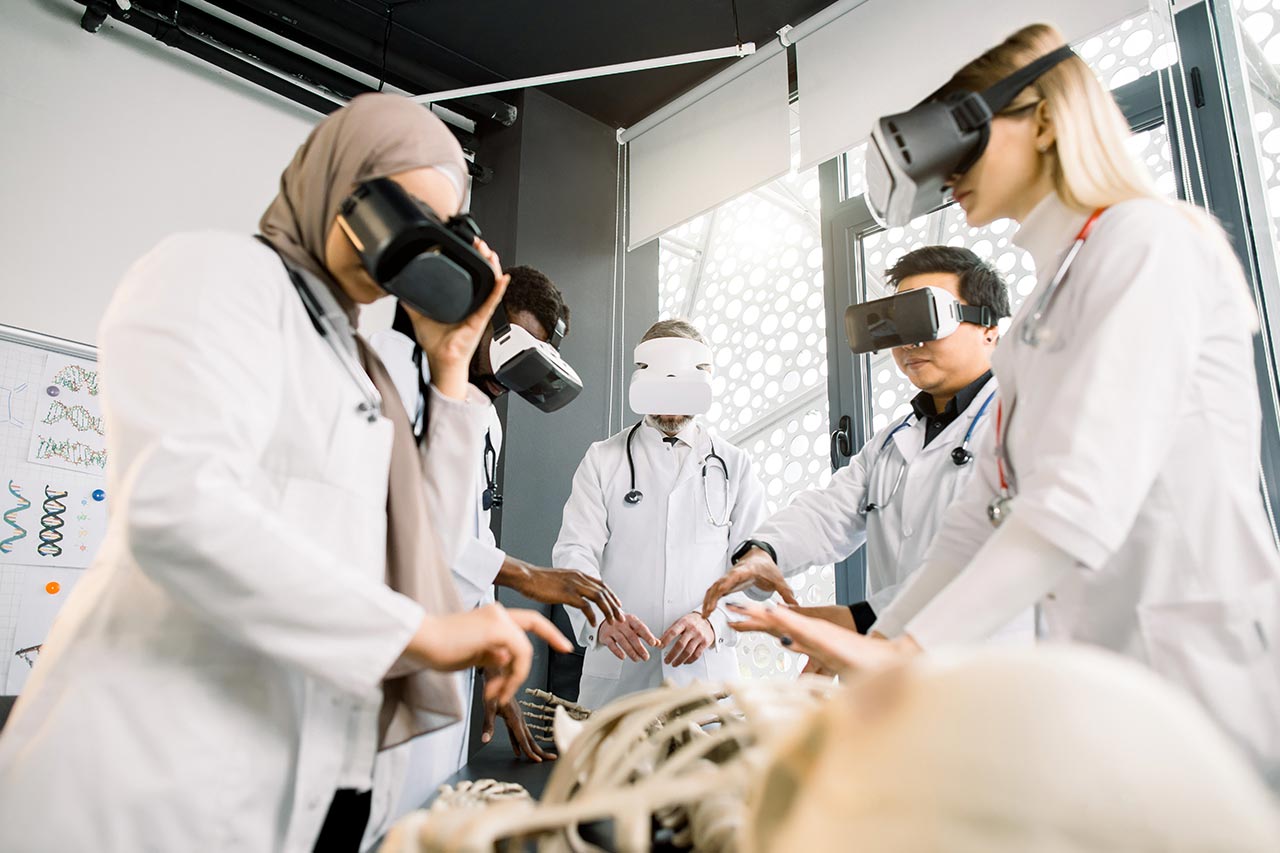Definition and history of robotic surgery
Widely democratized tools
In France, there is a total of 180 robotic platforms in 2021. Additionally, all French university hospital centers have built robotic surgery programs. This craze can be explained by the fact that this robot-assisted surgical technique has proven benefits for surgeons:
- Better comfort of execution
- Improved quality of procedure (precision and risk limitation)
- Performance of technical surgical procedures that are not mastered by the entire profession, but which are made possible by this technology
- Optimal performance of repetitive procedures and common expert gestures
A potential positive impact for patients
Moreover, the potential of robotic surgery is not negligible for patients. Depending on the case, we identify better post-operative comfort for patients (less pain, reduced visibility of scars…), a reduction in the length of hospitalization (faster healing…), a reduction in post-operative risks (fewer infections, less bleeding…)…
However, to date, there are no clinical or medico-economic studies of sufficient magnitude to demonstrate all these positive impacts. It is therefore easy to understand the challenge for health establishments, especially public ones, to carry out this research, which could lead to even more ambitious robotic programs.
Learn more about the challenges of robotics in healthcare >
An “Alcim” immersion in the operating room: a challenge to the idealized image of the surgeon
I came out of this experience with the feeling of having plunged into a scene that I could not have imagined before: a surgeon, master of the machine, and a patient lying under 3 robotic arms!
The context of my immersion
I wanted to go and see for myself what the robot really brings to the surgeon and the patient. To do so, on Monday, September 20, at 10:30 a.m., I went to one of the surgical centers of a university hospital.
Welcomed by the operating room team, I put on the traditional blue outfit and went to block 19, where I met a professor specializing in urology, who invited me to observe this operation assisted by the da Vinci Xi robot.
The patient suffers from prostate cancer, and a prostatectomy is performed to treat it. The operation lasts about 4 hours: I am present in the operating room for 1 hour. Around the surgeon are also a surgical intern, two operating room nurses, an anesthetist and two medical students.
A surgeon behind a screen, not at the patient’s bed
I am first struck by the size of the robot, a massive machine set up in the middle of the room. Its arms move up and down over the patient. At the back of the room, but not next to the patient as I would have imagined, the surgeon is sitting in front of his console, his eyes fixed in his glasses. Opposite him, another console allows me and the externs to follow the surgeon’s movements more closely. He explains to me very calmly, despite the precision of the gesture he is performing, that this double console system can also be used for training sessions for young surgeons.
In the room, two screens are also positioned to allow the whole team to follow the procedure in real time. The team, and in particular the surgeon, is finally quite far from the patient during the operation.
A training session in real time
The surgeon manipulates two instruments with the help of small “joysticks” to alternately perform different dissections and sutures on the patient’s prostate. The gestures are precise, agile and the surgeon makes a point of describing them to the whole team. He tells me that he voluntarily uses the minimum of instruments, to limit the invasive character of the operation. The intern, calm but very concentrated, asks many questions: it is a real work of transfer of knowledge on an ultra-technical tool which I am attending.
I came out of this experience with the feeling of having plunged into a scene that I could not have imagined before: a surgeon, master of the machine, and a patient lying under 3 robotic arms!
Projects related to robotic surgery: exciting exploration perspectives for Alcimed
The Innovation and Public Policy team had the opportunity to accompany a University Hospital in the organization of an internal seminar on the subject of robotic surgery. The day allowed us to co-construct a vision for robotic surgery strategy with the professionals and patients of the institution. This exciting experience is part of our desire to explore this territory of innovation that is robotics in healthcare which is constantly changing and offering new challenges to professionals, hospitals and patients!
About the author,
Mélina, Senior Consultant in Alcimed’s Innovation and Public Policy team in France



